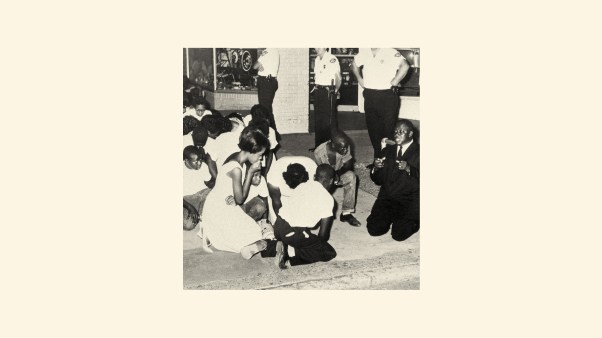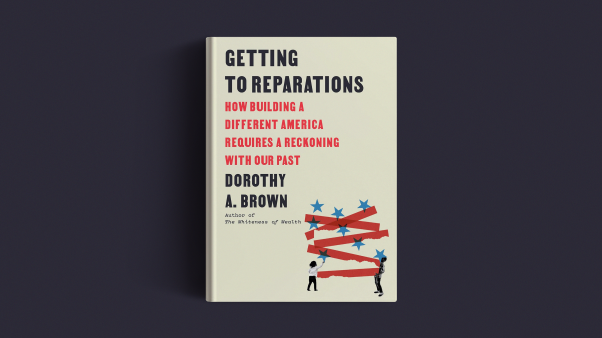In this series: Encouraging People to Engage Scripture
Jesus told his followers, Go and make disciples of all nations. Pastors know well that no two people under their care are in the same place spiritually. Making and growing disciples involves taking peoples spiritual temperature, helping them confront and address sin, guiding them to develop a love for Scripture, and much more. This Common Challenge covers ways you can introduce, initiate, and instruct the entire congregation into the life of allegiance to Christ.

An older neighbor of ours recently came over to the house. He was carrying a large box. After a little small talk, I welcomed him inside and motioned toward the box. “What’s this?” I asked.
“It’s a box of old Bibles.”
My neighbor had recently retired. He was moving into a smaller home and cleaning out his possessions. These Bibles had been in his family for a few generations. He wasn’t religious. Last year he told me he hadn’t been to church since before he served in Vietnam. He knew I was a pastor and thought maybe I’d want the Bibles. It was a kind gesture.
“You don’t want them?” I asked. “How about your kids. Would they want to keep them in the family?”
“No,” he said. “My wife passed away. My kids aren’t interested in them. They don’t read the Bible, and neither do I. If I throw them away, God might strike me dead or something.”
I almost laughed but realized he wasn’t kidding. He honestly thought God would punish him if he threw away the Bibles. The Bibles stayed with me. So did the conversation. It’s an extreme example of many people’s contradictory relationship with the Bible: they believe there’s something special about the Good Book, but they seldom, if ever, actually read it.
We were meant to bathe in the Word, to soak in it.
While Bible ownership and sales remain strong, Bible reading and engagement are down significantly. According to the Institute for Bible Reading, the average household in North America owns four Bibles and the average Christian household has 11 Bibles. Yet every day, 700 people stop reading their Bible for good.
As pastors, what are we to do with people who possess more Bibles than ever but have little interest in reading them? Furthermore, how can we move people beyond rote, check-the-box Bible reading and into practices of deep Scripture engagement?
Beyond Reading
How important is Scripture engagement? Greg Hawkins and Cally Parkinson, in their book Move, share their findings from researching spiritual growth in 1,000 churches. This was their conclusion:
Nothing has a greater impact on spiritual growth than reflection on Scripture. If churches do only one thing to help people at all levels of spiritual maturity grow in their relationship with Christ, their choice is clear. They would inspire, encourage, and equip their people to read the Bible—specifically, to reflect on Scripture for meaning in their lives. … The Bible’s power to advance spiritual growth is unrivaled by anything else we’ve discovered.
But Scripture engagement means more than merely reading the Bible’s words. According to Paul Caminiti, senior director of mobilization with the Institute for Bible Reading, Scripture engagement is about immersing ourselves in the Bible. We were meant to bathe in the Word, to soak in it. He says many people are told to just “pray and read their Bible.” We naively expect people to read their Bibles successfully without direction or guidance. The result, says Caminiti, is that people read the Bible in fragments, out of context, and in isolation. Caminiti suggests that the best way to reverse this shallow engagement is to teach people to read Scripture in larger portions, within its original context, and together in community.
Phil Collins, professor of Christian Educational Ministries at Taylor University, describes Scripture engagement as a process of marinating in and mulling over Scripture in a way that leads to transformative encounters with God. “It’s not for information or guilt or pride,” he says, “but to meet and know God. It is relational.” Collins says that this kind of engagement leads us to delight in God and his ways (Psalm 119).
How Can We Facilitate This Kind of Deeper Engagement?
First, we need to help people focus less on what and more on who. New Testament scholar Scot McKnight teaches that the goal of reading the Bible is not to know our Bible; it is to know the God of the Bible. We must have the proper end in sight: not more information, but a deeper relationship with God.
Second, we must read the Bible on the Bible’s terms, not our own. We do not stand over Scripture and interpret it. Instead, we place ourselves under Scripture and let it interpret us. The Bible has authority over our lives, not the other way around.
Third, we must help people see the book as a narrative compilation and not a reference manual for life. It is a story in which we participate. Glenn Paauw, author of Saving the Bible from Ourselves, says that even when people have access to a well-translated Bible they don’t necessarily engage it well. Snacking on little bits of Scripture is not what God intended. If people see it simply as a spiritual reference manual, says Paauw, it will never inspire them to engage with joy, excitement, and anticipation. But if we help people see the Bible as a grand story in which God invites us to participate, it can inspire and transform.
One fall morning, a few years ago, I looked out the living room window and noticed our neighbor’s tree changing colors.
“Look!” I said to my five-year-old son, putting my finger up to the glass and pointing at the resplendent tree.
He looked and slowly turned back to me with one eyebrow raised.
“What, Daddy?”
If we help people see the Bible as a grand story in which God invites us to participate, it can inspire and transform.
“Don’t you see it? It’s beautiful, isn’t it?”
He followed my finger again and then looked back again at me, blankly.
Insistent, I continued: “You don’t think that tree is beautiful with all of those colorful leaves?”
“What tree?”
I realized my son thought I was referring to the small speck of dirt on the window, which was quite close to where my finger pointed. He was looking at the window, not through it.
Many people take this approach to reading the Bible. They focus on the Bible rather than what the Bible reveals. Help people read the Bible in a way that enables them to see the whole world differently.
7 Practices to Foster Scripture Engagement
So, what can we do to foster Scripture engagement in our churches? Here are several practices to try.
1. Write out Scripture by hand.
Have people write out entire chapters or even books of the Bible. This can be painstaking, but it slows us down to savor each word. I’ve engaged in this process by slowly writing out the book of Matthew. I was forced to focus on each word and phrase, allowing me to discover fresh insights. I could only write out a handful of verses at a time, so it kept me from “speed reading” or skimming the passage. Instead of water skiing on the surface, I went scuba diving in the text.
2. Ask questions—even tough ones.
Read a passage, and then ask people to write out 10-to-15 questions about the passage on a piece of paper. Why did the woman ask that of Jesus? What was running through Abraham’s mind when he was walking up the mountain to sacrifice Isaac? Allow people to interact with the text by courageously wrestling with tough questions.
3. Put yourself in the story.
Read a narrative passage of Scripture with a group of people. Then, divide the room into quarters and assign people different characters in the story you just read. Ask them to imagine themselves in the story as if it were happening. Then read the story again and have them answer the questions, “If you were that particular person, what would you feel, think, or consider doing?” and, “What would you want God to do for you in that situation?”
4. Practice Lectio Divina
Lectio Divina—“sacred reading”—is a way to prayerfully read a passage of Scripture, slowly and repetitively, inviting the Holy Spirit to reveal truth to us through four movements: reading, pondering/meditating, praying, and living. While this is practiced most often individually, it can be just as powerful with an entire church.
5. Read the Bible communally and ask five simple questions.
Gather a group of people together, and have someone read a large chunk of Scripture. Then follow up with questions for interaction. For years our church has given people these five questions to encourage deeper interactions with the text.
- What’s going on in the story/passage?
- What excites, inspires, or encourages me about the passage?
- What challenges, jolts, confuses, or even offends me about the passage?
- What does this tell us about the essence of God or the nature of Jesus?
- What will we do with what we just heard/learned in the next seven days?
6. Memorize Bible stories together.
Many of us grew up memorizing verses, but when was the last time you memorized an entire Bible story? Stories grip up, shape us, move us, and inspire us. Gather with a group of people and commit to memory the Parable of the Prodigal Son or the story of Jesus healing Bartimaeus, and then take turns recounting the story to each other.
7. Utilize art and Scripture.
Through the centuries, artists have painted beautiful renditions of biblical accounts. Rembrandt’s The Return of the Prodigal Son, Caravaggio’s The Incredulity of Saint Thomas, and Eugene Burnand’s The Disciples Peter and John Running to the Sepulchre on the Morning of the Resurrection are great places to start. For a longer list of resources, visit Art and the Bible at artbible.info. You can also lay out art supplies (colored pencils, markers, paper, paints, canvases, clay), read a passage aloud, and ask people to draw or sculpt the story. Then, invite people to share their creations with others to stimulate conversation about the passage.
There are countless ways to invite people to engage with Scripture together. As pastors, may we model this love, delight, and passion for Scripture, showing others how our own relationship with Christ is deepened by our engagement with the Bible and inviting others to participate in the process with us.
J. R. Briggs is the founder of Kairos Partnerships. He served for 10 years as pastor of The Renew Community in the greater Philadelphia area.












